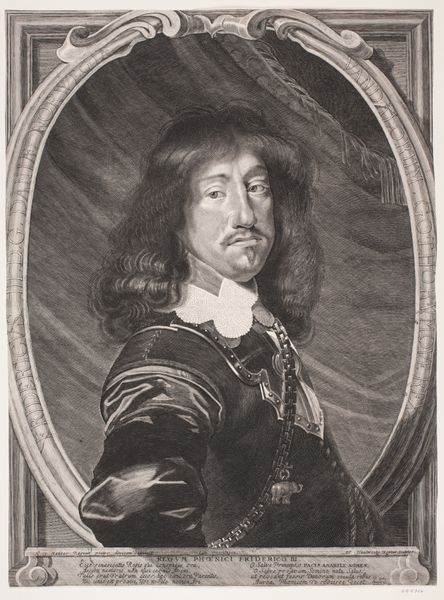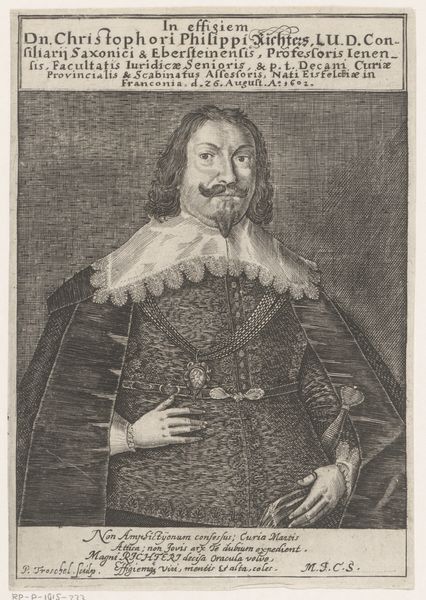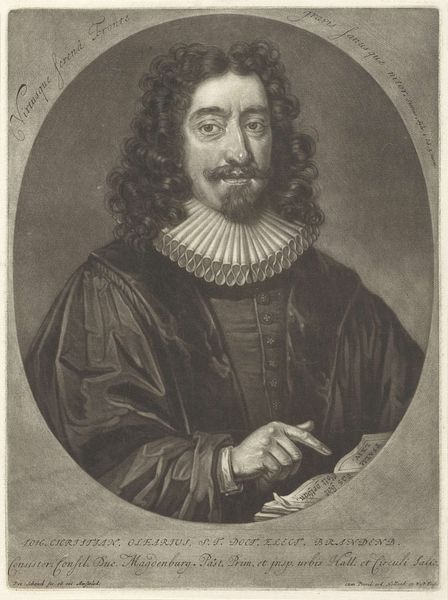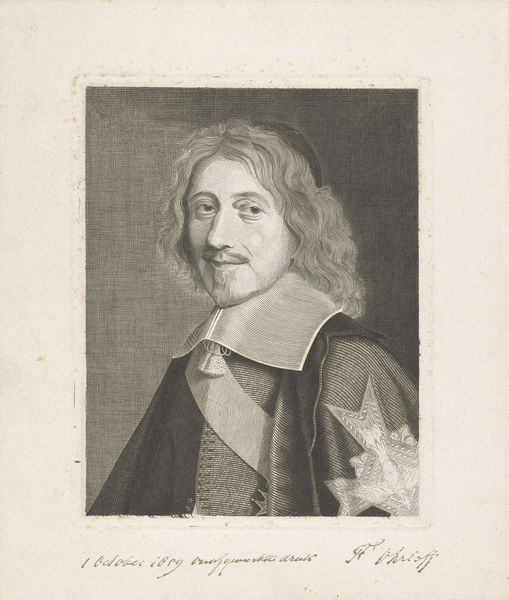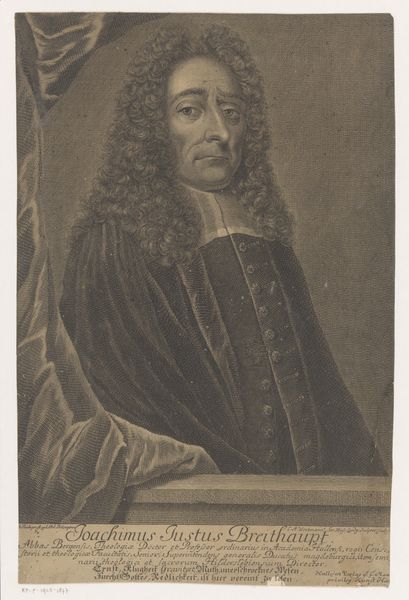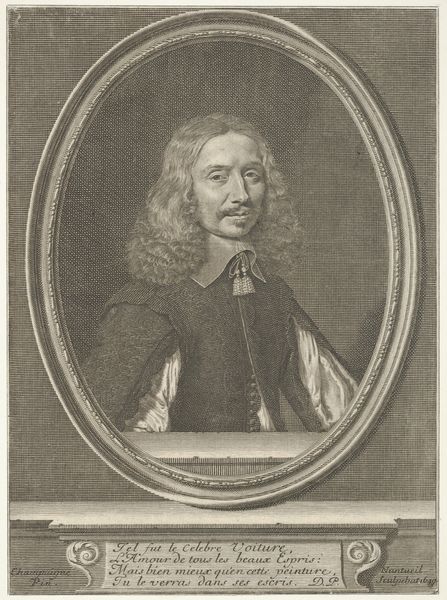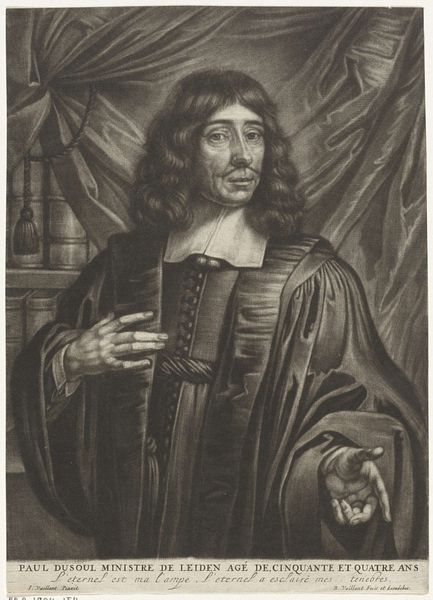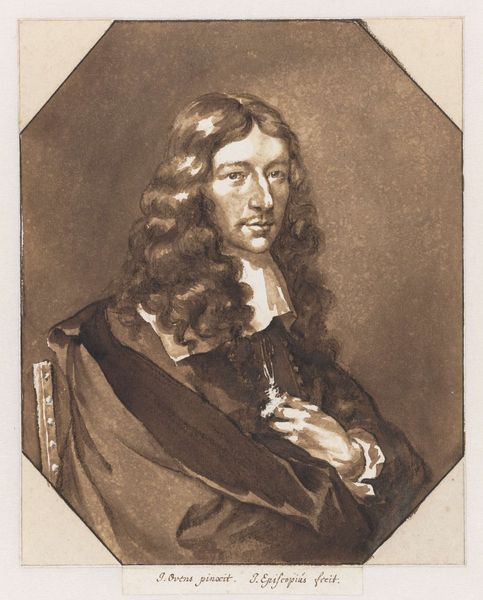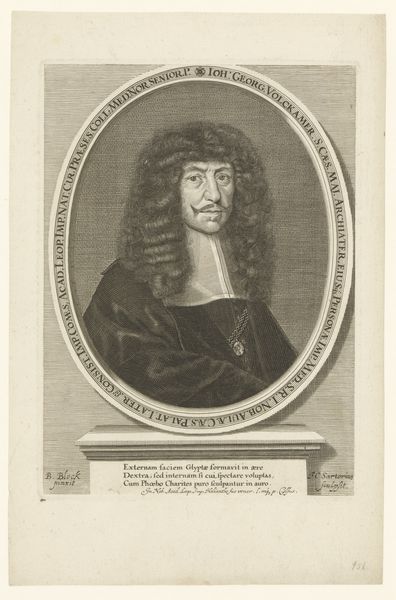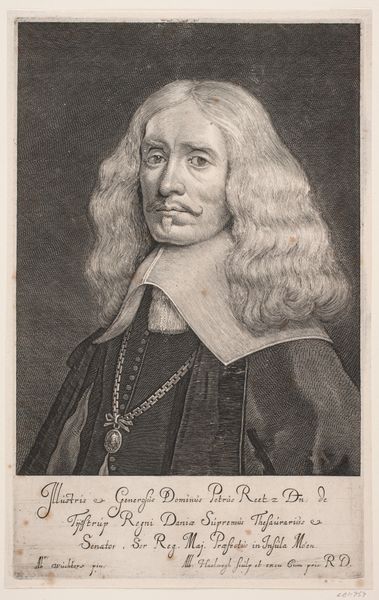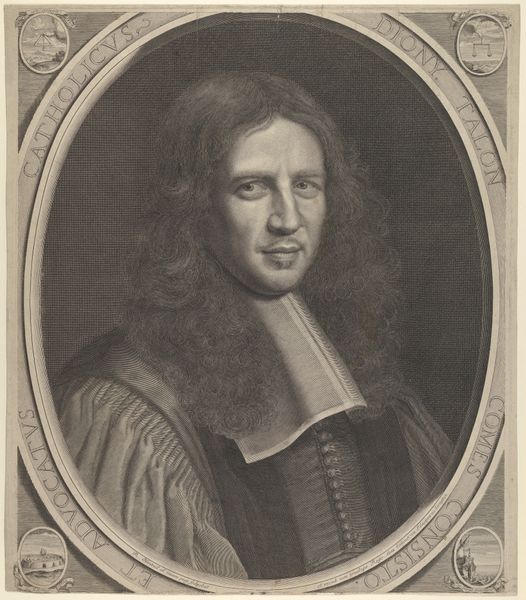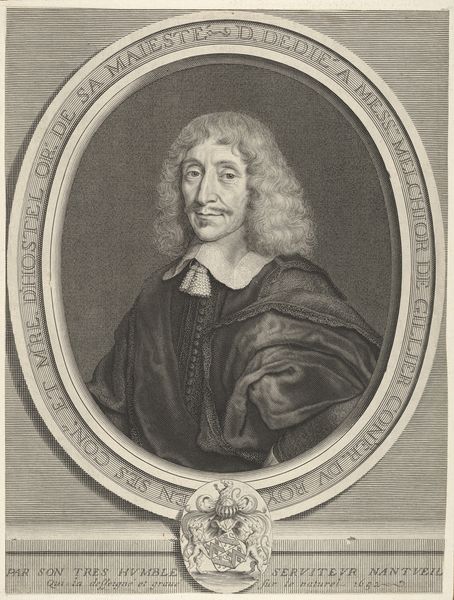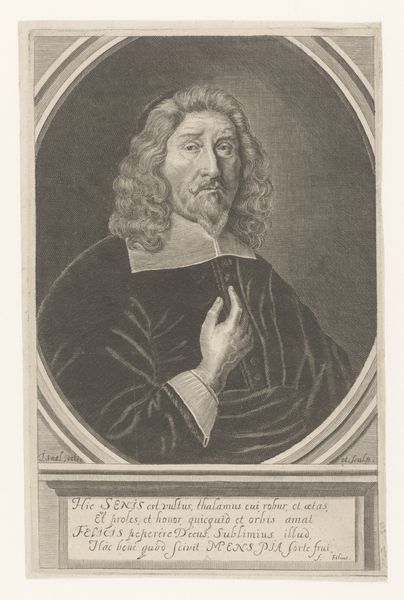
oil-paint, oil
#
portrait
#
baroque
#
oil-paint
#
oil
#
history-painting
Dimensions: 101.3 x 87.1 cm
Copyright: Public Domain
Editor: Here we have Johann Friedrich Trescher's oil painting, "Portrait of Heinrich Wilhelm von Kellner", which is currently housed here at the Städel Museum. It strikes me how the limited palette really focuses attention on the textures – especially the interplay between the stiff, starched collar and cuffs and the soft, flowing hair. What are your observations on the compositional elements at play here? Curator: Indeed. The portrait’s power resides not only in its representational accuracy, but also in its formal articulation. Note how Trescher masterfully employs chiaroscuro, heightening the contrast between light and shadow. The tenebrism doesn’t just illuminate the subject; it creates depth and drama. Also observe how the sitter's hand and book establish a spatial relationship within the canvas. Do you agree that this enhances the three-dimensionality, inviting the viewer into the scene? Editor: Absolutely. It's interesting how that single, subtle spotlight affects our perspective. And the book seems to serve less as a literal object and more as a structural element, providing a grounded base. But, if that's true, is its symbolic value diminished? Curator: I believe the artist leverages it, albeit unconventionally, for spatial rather than purely symbolic gain. Consider the materiality, too, especially the fabric’s rendering. Observe the details; these choices, as formal qualities, ultimately create the viewing experience. How else do the textural choices strike you? Editor: It really seems like the eye is drawn specifically to the starkness of the collar. That starkness pulls the whole scene into clarity for me. Curator: Precisely. It exemplifies how close analysis of compositional structure reveals so much. A new understanding evolves when focusing solely on artistic qualities. Editor: This piece highlights how attention to these elements enhances appreciation, regardless of historical context. Curator: Agreed. Reducing our view to intrinsic aspects unlocks a new avenue of seeing and interpreting.
Comments
No comments
Be the first to comment and join the conversation on the ultimate creative platform.
